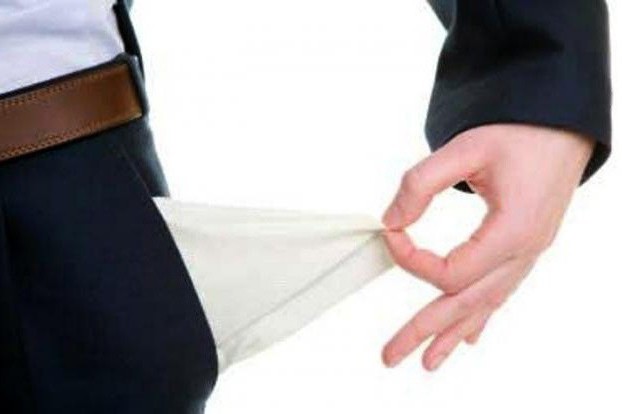A large number of citizens and legal entities annually declare themselves bankrupt. How does the bankruptcy registration process take place, and what role does the replacement of the debtor's assets play in this procedure? The answer to this question is presented in Federal Law No. 127-ФЗ "On Insolvency", the main provisions of which will be considered in the article.
What is the law about?
The presented Federal Law was created in strict accordance with the provisions of the Russian Civil Code. It establishes the grounds for declaring an individual or legal entity financially insolvent, and therefore regulates the process and principles for implementing measures to prevent bankruptcy, as well as the procedure for declaring a person bankrupt. The law enshrines the principle of priority of international norms, according to which the conflict between national and international law should automatically end up recognizing the main provisions of international law. In addition, the presented regulatory act regulates the provisions on the process of replacing the debtor's assets - a procedure that is becoming increasingly relevant in our time
What is bankruptcy? According to article 2 of the regulatory act under review, this is the debtor’s inability to satisfy the claims of creditors. Moreover, this inability must be recognized and registered by the arbitral tribunal. The debtor here is the person obligated to pay a certain amount to the creditor, and the creditor is the person establishing the relevant requirements for the debtor. Lenders can be ordinary and competitive. In the latter case, we are talking about persons for monetary obligations registered in bankruptcy proceedings.
Bankruptcy Cases
How are bankruptcy cases resolved? The first thing worth noting here is a mandatory role in the arbitration court process under consideration. The only exceptions are cases where the creditor's claims against the debtor are less than 300 thousand rubles. If the requirements for payment are confirmed by the tax or customs authorities, as well as by the Russian arbitration court, then they become binding on the debtor.
Who is entitled to appeal to the arbitration court? According to article 7 of the normative act under review, such persons may be bankruptcy creditors, debtors, individual bodies, as well as employees or former employees of the debtor. The bankruptcy creditor also has the right to appeal to the court, that is, a credit organization that appeared exactly when bankrupt appeared.
The debtor submits an application to the arbitration court only if he has evidence of imminent bankruptcy. Only by proving in court his financial insolvency can a person receive the appropriate status. It is also worth noting that the debtor may have a leader who will represent his subordinate in court.
On the rights and functions of creditors
What authority does the creditor have? Article 11 refers to the right to file a petition with the court for declaring a debtor bankrupt. If the creditor is the executive body, then it will be possible to take part in the court only after considering the validity of the requirements for payments.
Lenders may join in meetings.The participants in the meeting are bankruptcy creditors, as well as individual executive state bodies included in the register of creditors. The leader of the meeting is the arbitration manager. What powers do lenders have in a meeting? Here are some highlights:
- trial monitoring;
- carrying out work on financial recovery or external management, if there was a refusal to sell the subject of pledge;
- appeal to the court of arbitration with a request for removal of the meeting manager;
- resolving issues of the possibility of replacing the debtor's assets;
- selection of an arbitration manager.

In addition to all of the above, the meeting of creditors can approve or change the management plan, conclude amicable agreements, apply to the arbitration court on various issues, etc. It should be noted that most decisions in the meeting in question are made by voting. Also, lenders have a special register of requirements, which they must be guided in a timely manner.
Bankruptcy Prevention
The entire second chapter of the considered regulatory act is devoted to the prevention of bankruptcy processes. Article 30 states that the occurrence of signs of financial insolvency should entail the entry of information about the debtor or its leader in a single federal register. After that, the debtor is obliged to act only in strict accordance with the legal requirements and interests of the creditor. Leaders of the debtor should not commit acts that could adversely affect the financial position of the debtor. The same applies to the founders of the debtor as a unitary enterprise. All founders should contribute to the prevention of bankruptcy.
Section 31 of the Federal Law in question refers to reorganization — financial assistance that is provided by creditors or other persons in order to repay monetary obligations or claims for payment. Remediation is granted on a reimbursable basis by persons who have concluded an agreement with the debtor. So, the debtor himself undertakes an obligation in favor of the persons who provided assistance. Remediation helps to fully or partially restore the solvency of the debtor. In essence, rehabilitation procedures are “loans for loans”, however, they are quite popular among legal entities-debtors.
About external management
What is external governance to which the entire chapter is devoted in the regulatory act under consideration? According to the law, after the introduction of this system, all the powers and functions of the head of the debtor must cease completely. Management rests with a third party, that is, an external manager. This person has the opportunity to issue a decree on the dismissal of the former leader or offer him another job. Since the introduction of the external management system, the powers of the debtor's system management bodies are terminated. The relevant property is also under the responsibility of the new manager. All documentation, stamps, seals and other organizational values must be transferred to the new leader within three days. Special measures are being introduced to satisfy the requirements of debtors and moratoria are being adopted to ensure monetary obligations. External managers may make decisions on the replacement of the debtor's assets, on the election of new founders, etc.
How exactly is an external management system introduced? The law refers to the decision of the arbitral tribunal. Thus, the new manager and the replacement of the entire existing system will be perfectly legal for eighteen months - namely, such a maximum period is enshrined in the Federal Law under consideration. Of course, the court decision on the introduction of external control can be appealed.However, during the complaints period, the new system for the person who is the debtor will already work at full capacity.
About bankruptcy proceedings
What is bankruptcy proceedings? Information about this system is specified in Chapter 7 of the Federal Law under consideration. According to article 124, bankruptcy proceedings are accepted by the arbitral tribunal immediately after the person is declared bankrupt. This type of production lasts up to six months.
Bankruptcy proceedings refer to a specialized procedure applied to bankruptcy in order to satisfy the claims of creditors in a proportionate manner. By court decision, all production is implemented and controlled by a special bankruptcy trustee, whose duties include the work to achieve the following series of phenomena:
- termination of the accrual of penalties, interest and other sanctions for non-fulfillment of monetary obligations;
- termination of financial secrecy regarding the finances of the debtor;
- the executive term for the payment of the debtor's payments becomes due;
- previously imposed arrests on the assets of the debtor in bankruptcy are removed, etc.
What responsibilities does the bankruptcy trustee have? The answer to this question is provided by Article 129 of the Federal Law under consideration. Here it is worth highlighting:
- taking measures to search for property of a debtor held by unauthorized persons;
- ensuring the safety of the debtor's property;
- conducting an inventory of the debtor's property;
- inclusion of inventory data in the Unified Federal Register;
- notification of employees of the debtor of dismissal;
- conclusion, with the consent of the creditors, of transactions that could be effective for the debtor;
- competitive substitution of the debtor’s assets, etc.
According to the law, the bankruptcy trustee has a fairly large number of rights and obligations. In fact, he completely replaces the former leader of the debtor, and therefore the range of his powers is quite large.
Debtor asset replacement: general process description
The chapter of the Federal Law on external management contains article 115, which describes the process of replacing financial assets. What is this procedure and how can it be useful? According to the law, the entire replacement process is based on the property of the debtor himself. The procedure can be included in the external management plan and implemented by order of a new manager, appointed to the position by decision of the arbitration court. All existing creditors must vote for a decision on the implementation of the procedure under consideration if their obligations are secured by the property of the debtor (or an appropriate pledge).
Replacing the debtor's assets as an external management method is a very effective and relevant procedure, which is often used at present to get out of bankruptcy status. During the procedure, a number of joint-stock companies are created in which the authorized capital is composed of the assets of the debtor. The necessary composition of the debtor's property is determined in accordance with the external management plan.
Who, according to the law, is the founder of new joint-stock companies? Oddly enough, this is not an arbitration court or an external administrator, but the debtor himself. Moreover, he is the sole founder, participation in the business of other persons is not allowed. The debtor does not affect the determination of the amount of the authorized capital. This is only a meeting of creditors. The size of the authorized capital of each individual company of a joint-stock nature is calculated in accordance with the assessment of the market value of the property, which is paid in capital.
On the features of the process of replacing the debtor's assets
Article 115 of the normative act in question states that during the period of the implementation of the asset replacement process all existing labor contracts remain valid,however, the duties and powers of the employer pass to the newly created joint-stock companies.
What happens to stocks that are created on the basis of property of a person who has declared bankrupt? According to the law, they are included in the property of the debtor and are subsequently sold at auction. It is easy to guess that the process of selling shares will ensure the accumulation of finances for the full or partial restoration of the solvency of the debtor. In this case, the sale of shares should be carried out only on a legally organized market for the sale of securities.
It is worth paying attention to the replacement of the debtor's assets during bankruptcy proceedings. So, at competitive creditors there is a replacement of a subject of pledge. These individuals have a lien on new shares that come from newly created joint stock companies.
The federal law establishes one very important rule: joint-stock companies created by the debtor must not dispose of the property contributed to the authorized capital exactly until all the procedures used in the bankruptcy case are fully implemented.
On the value of the debtor's assets
In the process of replacing the assets of a person who is a debtor, the correct calculation of these assets plays an important role. It is engaged in the calculation of the relevant accounting and auditing companies under the supervision of an external manager.
What is the carrying amount of assets? The debtor, who was once the manager in the company (if he acted as a manager), in a timely manner fixed at his enterprise the total value of the assets of the balance sheet, that is, the amount by which the assets were reflected in the balance sheet. Their value is the main indicator characterizing the financial position of the organization at a specific date.
How can I calculate the indicator of the security of the debtor with its assets? Formula Cost = D01 - K02 provides an answer to this question. Here d01 is a debit balance, K02 - balance of credit type. Intangible assets are also calculated using this formula.
Why is it necessary to keep the book value of assets? First of all, for financial analysis. Whether a legal entity or an individual is optimally functioning or a debtor, the problem of a competent financial analysis will not go away. Especially when the issue of the procedure for replacing assets is on the agenda.
About financial recovery
The fifth chapter of the normative act in question deals with a process with the very encouraging name of "financial recovery". Almost all previously represented persons take part in this procedure - this is the debtor himself, the meeting of creditors, and the arbitration court, which establishes this process. To the meeting of creditors apply persons with the corresponding application. Documents drawn up by the interim manager are attached to the application.
How is the procedure for financial recovery? The law states that an appropriate decision will be made by an arbitration court, after which the process itself is subject to immediate execution. The consequences of financial recovery are usually the following phenomena:
- previously taken measures to implement the requirements of creditors are subject to cancellation;
- the execution of property penalties is suspended;
- the seizure of property of the debtor by the direct owner is not allowed;
- no more penalties, units, fines, penalties and other sanctions are charged. The exception here is only current payments.
The financial recovery process is not always successful. It all depends on the state of the person who declared himself bankrupt, and the work of the relevant officials.